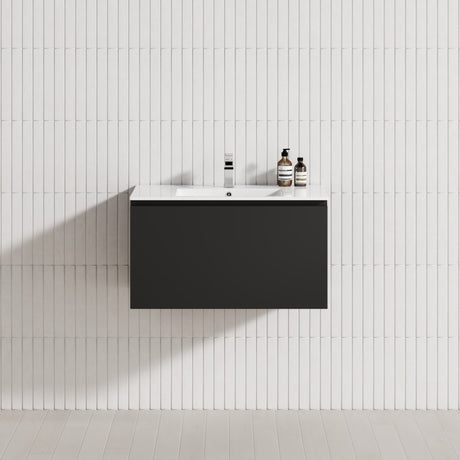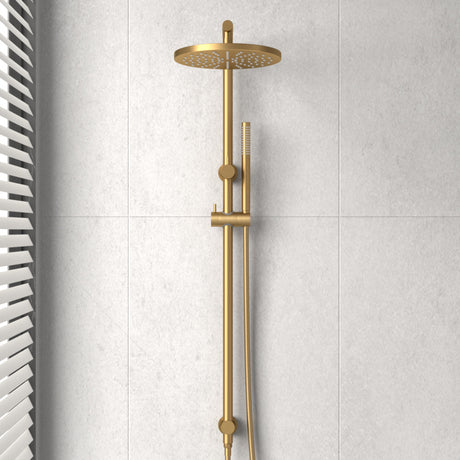14 October, 2025
Japanese Bathrooms Design Ideas: 20 Practical Creative Designs
Dive into Japanese bathrooms' unique charm with 20 design ideas. From deep soaking tubs to minimalist layouts, create a serene, relaxing space inspired by traditional bathing culture.


In Western culture, bathrooms are often viewed as purely functional spaces—quick showers and then rushing out to continue the busy day. But for Japan, the bathroom is a sacred place to wash away both physical fatigue and mental dust.
This article will take you on a deep exploration of what makes Japanese bathrooms unique, along with 20 Japanese bathroom design inspirations to help you create a serene and comfortable bathroom space.

What Makes Japanese Bathrooms Unique?
Japanese bathrooms are special because of how the space is divided. Unlike many Western bathrooms, where the toilet, sink, and shower or bathtub are all in one room, traditional Japanese bathrooms separate them into three areas.
- Toilet Room: A dedicated space for placing Japanese toilets, usually equipped with high-tech smart toilets featuring warm water cleansing, heated seats, and other functions.
- Washing Area: This area has a sink and vanity mirror, specifically for daily washing and grooming.
- Bathing Area: Includes shower facilities and a bathtub (ofuro). The bathtub is typically deeper and smaller, designed specifically for comfortable soaking rather than full-body washing like Western-style tubs.
In Japan, people always wash their bodies well before getting into the bath. This keeps the bathwater clean for everyone. After washing, they slowly step into the warm water and relax. The heat and steam help the body unwind and wash away the day’s tiredness.
20 Japanese Bathrooms Ideas
Planning a bathroom upgrade and hoping to bring in a touch of Japanese style? These 20 ideas can help you make a calm, relaxing space that feels simple, fresh, and peaceful.
1. Deep Soaking Tub
Japanese bathtubs (Ofuro) are typically deep with compact shapes, designed specifically for comfortable soaking. Traditional Ofuro are made from cedar wood, but modern versions also use acrylic, stainless steel, or stone.
The width and length can be smaller (100-120 cm), but the depth should be at least 60 cm, allowing you to sit upright with the water level rising to your shoulders.
2. Wooden Slatted Flooring
Installing wooden slatted flooring in Japanese shower areas not only adds natural warmth but also provides practical drainage functionality.
Wooden slats allow water to drain away quickly, reducing wet areas while providing a more comfortable barefoot feeling than cold tiles.
The dry-wet separation design of public restrooms in Japan often borrows from this concept to keep floors dry.
3. Half-Wall Partition
Instead of fully enclosed shower enclosures, consider using half-wall partitions to separate the bathing and washing areas. This design maintains the space's openness while providing functional zoning. Half-walls can be made from frosted glass, stone, or wooden panels, with the top suitable for placing plants or decorative items to add visual interest.
4. Minimalist Design
Japanese bathrooms abandon all elaborate decorations, using clean, flowing lines and restrained colors to create a tranquil atmosphere. Focus on white, beige, light gray, and wood tones, occasionally accented with dark elements to add depth.
5. Bamboo Bathroom Accessories
Replace traditional plastic or metal bathroom items with bamboo accessories to add Japanese flair to the space. Many Japanese public bathroom facilities use bamboo towel racks and storage baskets to strengthen the natural atmosphere.
6. Minimalist Storage
Use hidden storage and minimalist design to maintain the neat appearance of Japanese bathrooms. Consider using built-in wall niches, floating shelves, or simple bamboo storage baskets to store essentials while maintaining visual calm and harmony. Remember, in Japanese design, "less is more."
7. Natural Light and Soft Lighting
In bathrooms, introduce soft light through frosted windows. Gentle lighting will make you feel relaxed, ensuring privacy while creating a bright atmosphere. This is also very common in Japanese public toilets and hot spring rest areas.
8. Plant Elements
Introducing green plants to Japanese bathrooms not only adds a natural feel but also improves air quality. Choose moisture-loving plants like peace lilies, bamboo, orchids, or ferns that thrive in humid bathroom environments while bringing vitality and energy to the space.
9. Neutral Color Palette
Japanese bathrooms typically adopt nature-inspired neutral tones such as beige, brown, gray, and soft whites. This color choice creates a calm, relaxing environment while highlighting the beauty of natural materials.
10. Rock Garden Elements
Add small Zen garden details like neatly placed pebbles, a tiny bonsai tree, or a small stone lantern. These simple decorations bring a peaceful feeling and make the space calm and thoughtful, just like a Japanese garden.
11. Hot Spring Style
Recreate the atmosphere of Japanese hot springs at home through elements like stone masonry, wooden fencing, and bamboo decorations. Add bath salts and essential oils to feel as if you've truly arrived at a mountain hot spring inn.
12. Bathroom TV or Sound System
While this may sound modern, many Japanese bathrooms are equipped with waterproof TVs or sound systems to make soaking time more enjoyable. Consider installing a waterproof tablet holder or a hidden speaker system to enjoy your favorite shows or music while relaxing.
13. Natural Landscape Murals
Decorate your bathroom walls with paintings or murals that show nature scenes like mountains, bamboo forests, or cherry blossoms. Looking at peaceful landscapes while you bathe helps you relax and clear your mind. You can choose designs with Mount Fuji, quiet Zen gardens, tall bamboo, or soft falling petals.
14. Handmade Ceramic Tiles
Choose handmade ceramic tiles where each piece has unique texture and color variations. You can select irregular arrangements or mix different tones to create unique visual effects.
15. Sliding Doors or Pocket Doors
Use sliding doors instead of traditional hinged doors, which not only saves space but also echoes traditional Japanese architecture. Many public toilets Japan continue to use this design for convenient access. Also consider using frosted glass, wooden frames, or bamboo-framed doors to add traditional charm while maintaining light flow.
16. Built-in Aromatherapy
Add aromatic elements to the bathroom, such as built-in essential oil diffusers or traditional incense burners. Cedar, lemongrass, or lavender essential oils can create a relaxing atmosphere and enhance the sensory effects of the bathing experience.
17. Water Feature Elements
Install a small bamboo water feature or a stone basin fountain. During bathing, the sound of trickling water can instantly create a tranquil atmosphere, making bathing a dual therapy for hearing and touch.
18. Custom Wooden Bathtub Caddy
Design a wooden shelf or tray for the bathtub to hold bath salts, candles, books, or teacups, making soaking time more enjoyable. You can choose multifunctional styles with phone slots, wine glass holders, and book rests.

19. Seated Shower
In Japan, people often sit on small stools to wash before getting into the bath. This makes washing more relaxing and keeps the bathwater clean. You can add a small wooden or stone stool in your shower and use a handheld shower head for easy washing.
20. Rain Shower Head
Large overhead shower heads can provide a fine, gentle water flow experience like rainfall. Close your eyes and feel as if you're in a warm drizzle in the forest.
Choose shower heads with a diameter of at least 30cm for wider water flow coverage and a better experience.
Conclusion
Japanese bathrooms stand out for their simple layout and use of natural materials. They create a peaceful space where beauty, comfort, and practicality come together. If you want to bring this relaxing style into your own home, MyHomeware has a wide range of quality Japanese bathroom products, including bathtubs and smart toilets, to help you build your own calm retreat.












